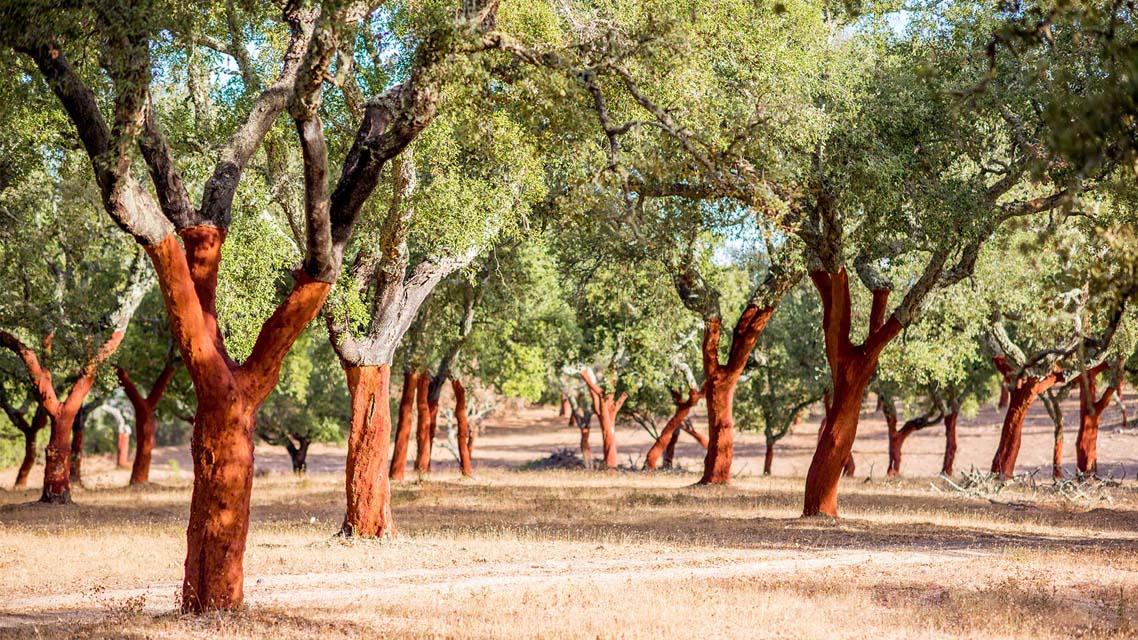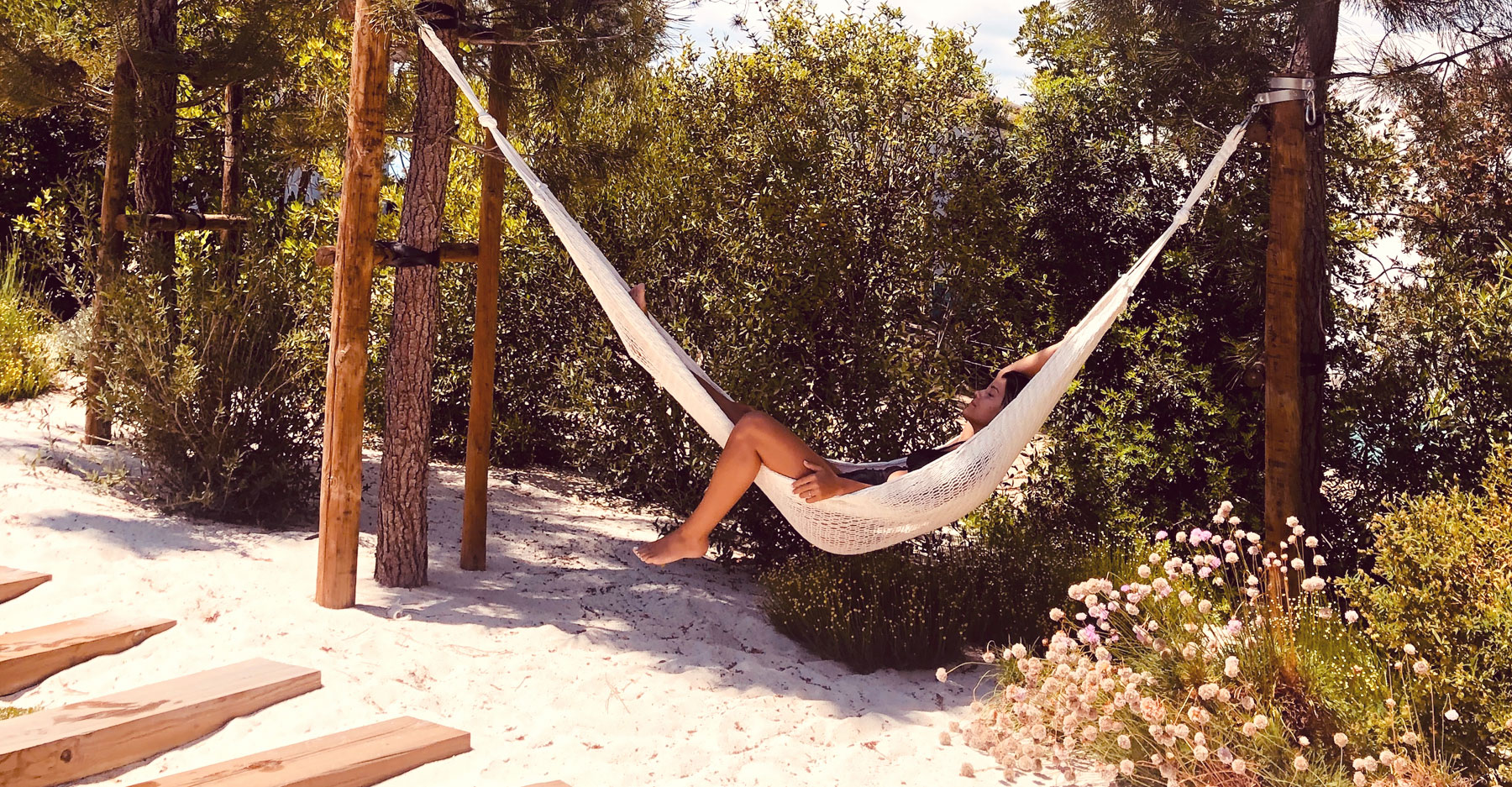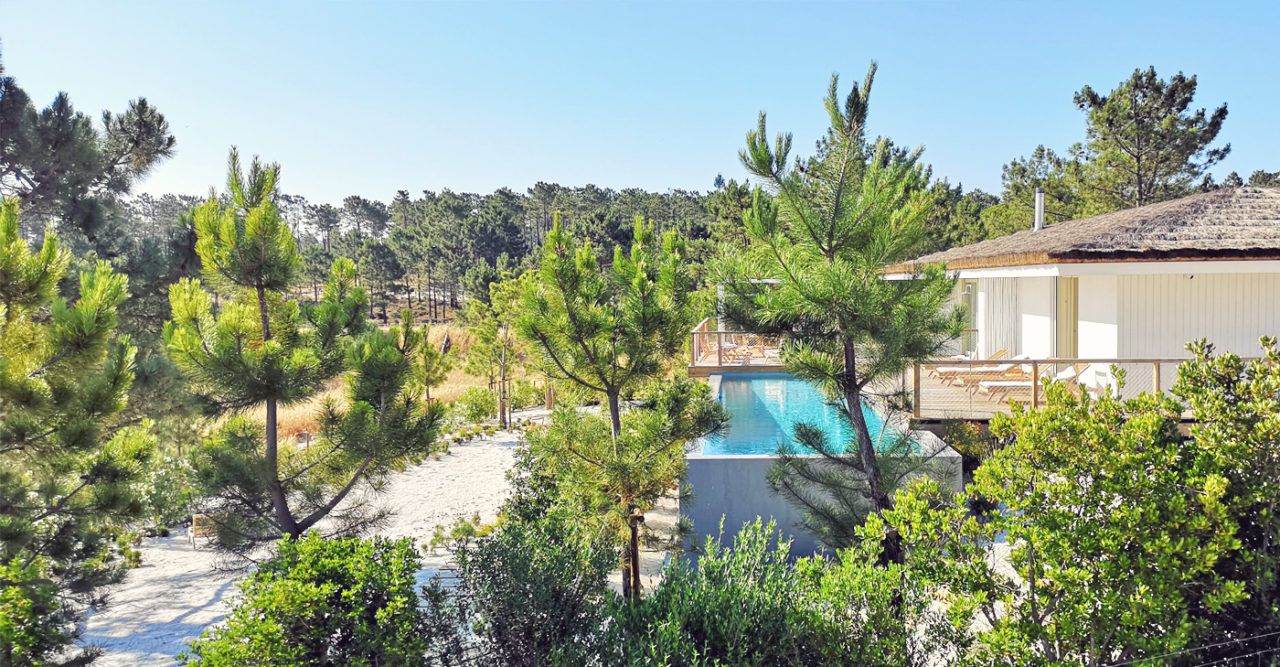

The cork oak, treasure of Comporta and Alentejo
In the Comporta region, cork oak forests compete with green rice fields, pine forests and white sand dunes to charm the eyes of travellers. This amazing tree is used for the production of cork, making Portugal the world’s leading exporter of this material. Discover the landscapes of Comporta and understand why and how the cork oak has shaped the territories and economy of the region.
What is cork?
The Portuguese have been able to develop a unique know-how enabling them to exploit cork like nowhere else. The country has 33% of the world’s cork oak growing area, making it the world’s leading cork producer. Initially used in shipbuilding, which made Portuguese explorers the world’s first discoverers, this material is now mainly used to make stoppers for wine bottles. Around 12 billion bottles are corked with cork every year, i.e. 7 out of 10 bottles. In Alentejo there are about 530,000 hectares of cork oak plantations, which you can observe during your holiday in Comporta.
How is cork exploited?
The cork harvesting process consists of several stages. First of all, the tree grows between 25 and 30 years before being debarked. Called male cork, the first bark is of low quality, very hard and irregular. It will take another 9 years to obtain the female cork used by cork makers. It is truly after a new 9-year cycle that the noblest cork will be obtained, destined for the best winemakers. During its life, which can last between 150 and 200 years, a cork oak will produce 12 to 15 barks. To carry out the barking (“descortiçamento” in Portuguese), 5 steps must be followed :
- Open, i.e. split the bark with an axe ;
- Separate the cork board from the trunk ;
- Cut the board to the right size;
- Peel off and extract the board;
- Mark the trunk to reference the date of debarking,
The corks are then extracted from the best part of the board.
What is this cork used for?
The first debarking results in cork for use in the insulation or flooring industry. It is really from the third debarking and then every 9 years that the best quality cork will be obtained. With this cork, mainly wine bottle stoppers are cut, but also many other accessories. You will find many cork trinkets and souvenirs in the Comporta shops. Highly versatile, it offers a variety of characteristics that allow you to make objects of different colours or hardness. For example, Pelcor made a dress for Lady Gaga, and artist Scott Gundersen creates paintings entirely out of cork. NASA uses it for the insulation of spaceships, and surfboards and skateboards are also made from cork.
Where to see the cork forests?
The south of Portugal, especially the Alentejo region, is the best place to observe the cork oak forests. From Comporta, you can go on excursions on foot, by bike or on horseback through different landscapes, including these very special forests. You can opt for a guided tour of a farm to discover all the secrets of production. A good way to combine pleasure and culture during your holiday, before enjoying the peace and quiet of one of our villas in Comporta!
Comporta Erfahrung

Portugal im Frühling – Die schönten Orte
PPortugal ist ein Land mit einer Fläche von 92.212 km², das im Südwesten Europas liegt und in dem rund 10 Millionen Menschen leben. Aufgrund seiner geografischen Lage ist es ein privilegiertes Land mit einer Küstenlinie von etwa 943 km am Atlantischen Ozean. Der Frühling ist eine ausgezeichnete Wahl für eine Reise nach Portugal. Was auch

Comporta Lifestyle: Portugals neuer schicker Rückzugsort
Comporta liegt an der portugiesischen Alentejo-Küste und ist eines der einzigartigsten und exklusivsten Reiseziele des Landes. Umgeben von riesigen Reisfeldern, weißen Sandstränden und einem entspannten Lebensstil verbindet die Region Einfachheit mit Raffinesse und zieht Urlauber an, die Ruhe, Natur und rustikalen Charme suchen. Bekannt für sein bohemian-elegantes Ambiente und besondere gastronomische und kulturelle Erlebnisse, ist

Die neuen Villen von Christian Louboutin
Der legendäre Designer Christian Louboutin, weltbekannt für seine Schuhe mit roten Sohlen, hat mit der Eröffnung seines Boutique-Hotels „Vermelho“ in Melides, Portugal, seine kühne und raffinierte Ästhetik in die Welt der Hotellerie gebracht. Das Projekt geht nun mit zwei neuen Villen, die jeweils ihren eigenen Stil haben und von unterschiedlichen Design- und Dekorationselementen inspiriert sind,
